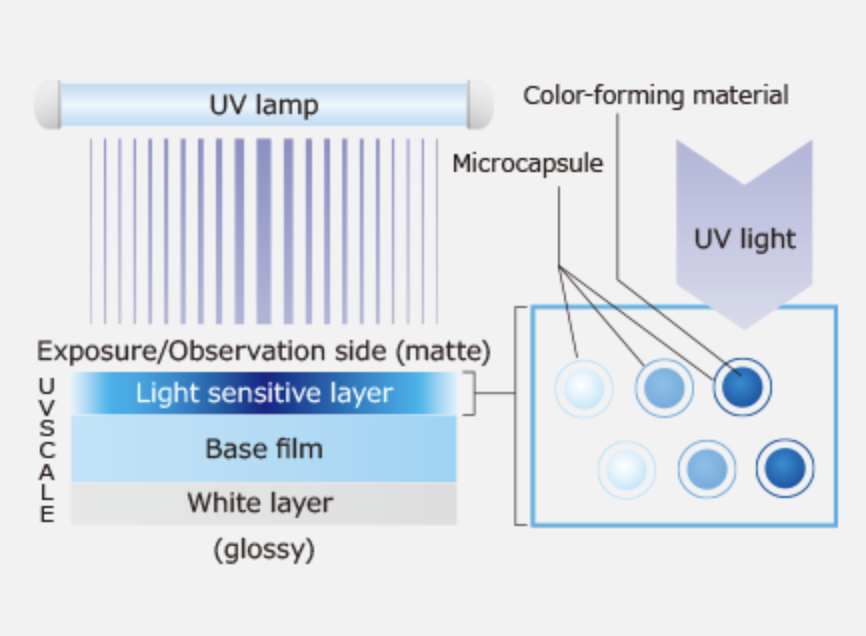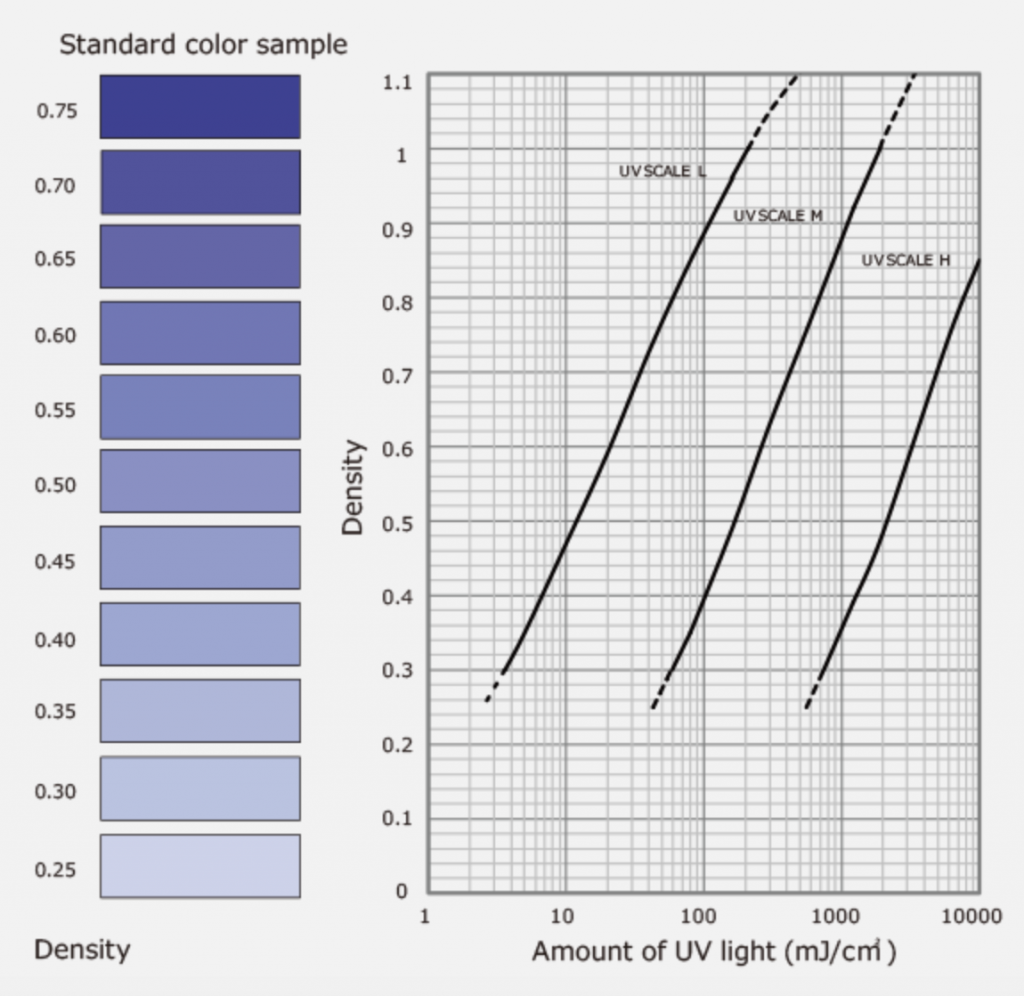Ultraviolet light distribution measurement film (UVSCALE)
UVSCALE is a film that responds to UV light, and changes colour depending on the amount of light it is exposed. This makes it easy to see UV light distribution. UVSCALE is available in rolls or sheet packs, with three types for different amounts of light
| Type | Classification | Thickness | Product size | |
|---|---|---|---|---|
| Roll type (width × length) | Sheet type (height × width) | |||
| UVSCALE L | Mono-sheet Type | 0.1mm | 270mm×5m | 270mm×200mm(5 sheets) |
| UVSCALE M | Two-sheet Type | 0.1mm×2 | ||
| UVSCALE H | Two-sheet Type | 0.1mm×2 | ||
Structure and Principle
Structure
One side of the base film has a UV light sensitive layer and the opposite side has a white layer. The light sensitive layer changes colour according to the amount of UV light it receives, so the amount of light distributed on the exposed surface can be easily seen by observing the light sensitive layer and white layer when they are attached to the base.
Principle
The colour-forming material in the microcapsules reacts with the UV light and changes colour.

How to use UVSCALE

After cutting UVSCALE to the requires shape (length), place it on the location that you want to measure.

Operate the equipment or device, and expose UVSCALE to UV light.
*The side of the UV-SCALE with the matte surface should be exposed

UVSCALE changes colour in accordance with the amount of UV light.

Remove the UVSCALE, and determine the distribution of UV light by observing the colour distribution.
*Use the matte side for observing
Features
Standard colour chart
The figure on the right represents colour characteristics generated by a high-pressure mercury lamp. However, please note that these colour characteristics are values generated by using Fujifilm light sources and devices, so there may be differences in colour density for a given amount of light due to differences and variations in individual lamps or the environment.
Advantages of visual checks
Referring to standard colour charts makes it possible to visually judge accumulated light values in an easy way.
Providing colour samples can significantly reduce the time necessary for checking the amount of UV light when starting work and switching objects to be exposed.

* Each density is the value measured by Fujifilm. It is not a guarantee of density level.
* The amounts of UV light are values using a 365 nm UV illuminometer.
* The solid lines on the graph show the recommended measurement range. The broken lines represent values that are not as precise as the solid lines and should be used as reference only.
* Standard Colour Samples show the density range for visual evaluation.
Effective light measurement range for each type
UVSCALE L
| Measurable lamp | Effective light measurement range*1(mJ/cm2) |
|---|---|
|
High-pressure mercury lamp |
4-200 |
|
Metal halide lamp |
6-200 |
|
Low-pressure mercury lamp |
20-3000 |
|
UV-LED lamp (365 nm) |
200-6000 |
UVSCALE M
| Measurable lamp | Effective light measurement range*1(mJ/cm2) |
|---|---|
|
High-pressure mercury lamp |
50-2000 |
|
Metal halide lamp |
30-1000 |
|
UV-LED lamp (365 nm) |
300-7000 |
UVSCALE H
| Measurable lamp | Effective light measurement range*1(mJ/cm2) |
|---|---|
| High-pressure mercury lamp | 800-40000 |
| Metal halide lamp | 700-20000 |
| UV-LED lamp (365 nm) | 5000-100000 |
* Applies to wavelengths in the 200 to 420 nm range
* This does not guarantee the absolute values of UV light values.
*1 The measurement ranges mentioned above are for when FUD-7010E is used. The amount of light range that can be visually checked is the density on standard colour samples (0.30 to 0.75).

